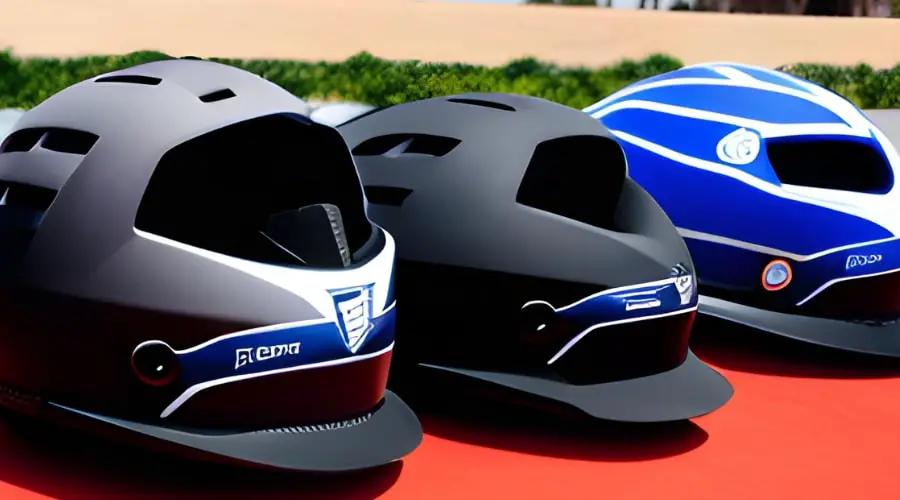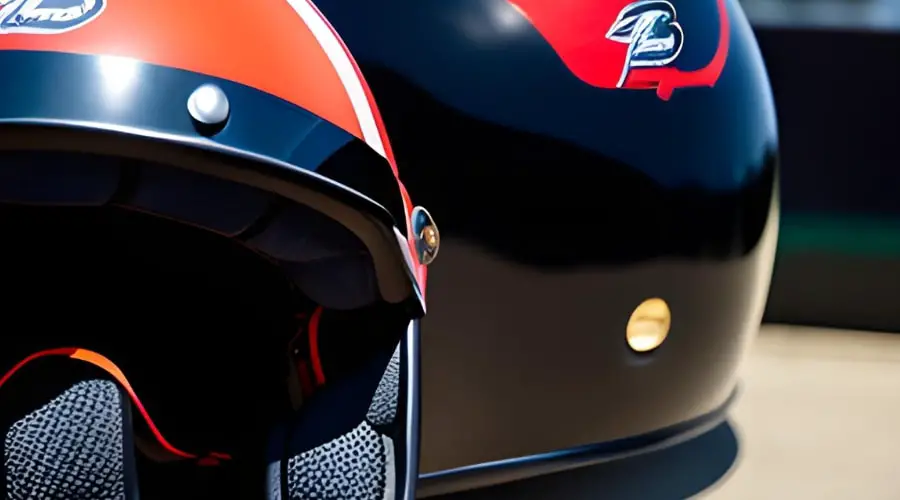Wearing a helmet is crucial for protecting the head during various activities that involve a risk of impact or injury. While helmets primarily focus on safeguarding the brain and skull, exploring whether they provide adequate face protection is essential. This article will explore the question, “Do Helmets Protect Your Face?.”

Benefits of Helmets
Protection for the Head
Helmets are specifically designed to provide a protective barrier for the head, reducing the risk of severe head injuries in case of accidents or collisions. They act as a first line of defense, absorbing and dissipating the force of impact, thereby safeguarding the delicate structures within the skull.
Impact on Facial Injuries
While helmets primarily focus on head protection, their design and construction also contribute to minimizing facial injuries. The structure and materials of helmets offer a level of defense against facial trauma by reducing the impact force transmitted to the face in the event of an accident.
Types of Helmets
Full-face Helmets
Full-face helmets provide the highest level of protection as they cover the entire face, including the chin and jaw. They feature a sturdy outer shell, a comfortable inner lining, and a built-in face shield, offering comprehensive protection against impacts, debris, wind, and even UV rays.
Half Helmets
Half helmets, also known as open-face helmets, cover the head’s top and sides while exposing the face. While they provide less coverage than full-face helmets, they still offer some facial protection against minor impacts and abrasions.
Modular Helmets
Modular helmets combine features of both full-face and open-face helmets. They feature a hinged chin bar that can be raised or lowered, allowing riders to switch between full-face protection and open-face convenience. Modular helmets provide versatility while ensuring adequate protection for the face.
How Helmets Protect the Face

Chin Bars and Face Shields
One of the key components of helmet design is a sturdy chin bar. The chin bar is a protective extension of the helmet shell, offering direct protection to the lower face, jaw, and chin. Additionally, face shields or visors provide an extra layer of defense against flying debris, wind, and sunlight, reducing the risk of facial injuries.
Material and Construction
Helmets are constructed using strong, impact-resistant materials such as polycarbonate, fiberglass, or carbon fiber composites. These materials are specifically chosen for their ability to absorb and distribute impact forces, thereby minimizing the potential for facial injuries.
The Role of Helmets in Preventing Facial Injuries
Facial Fractures
Helmets significantly reduce the risk of facial fractures by acting as a barrier between the face and potential impact. The structural integrity of helmets helps distribute the force of an impact across a wider area, decreasing the likelihood of fractures to the facial bones.
Soft Tissue Injuries
Soft tissue injuries, such as lacerations, abrasions, and contusions, can be mitigated by the protective nature of helmets. The outer shell and padding of helmets offer a cushioning effect, reducing the severity of soft tissue injuries that may occur during accidents or falls.
Helmet Fit and Face Protection
Importance of Proper Helmet Fit
Ensuring a proper helmet fit is crucial for maximizing face protection. A well-fitting helmet should snugly cover the entire head, with the chin strap securely fastened. This ensures that the helmet remains positioned during impacts, preventing any potential slippage that could expose the face to injuries.
Shield and Visor Adjustments
The shield or visor of a helmet plays a significant role in face protection. It should be properly adjusted to provide an unobstructed view while effectively shielding the face from wind, dust, and debris. Riders can adjust the visor angle to optimize visibility and ensure it covers the entire face adequately.
Addressing Misconceptions
Helmets Increase Facial Injuries
One common misconception is that wearing a helmet increases the risk of facial injuries. However, research and statistics consistently demonstrate that helmets significantly reduce the overall risk of facial injuries in accidents. The protective features of helmets, including chin bars and face shields, actually contribute to minimizing facial trauma.
Helmets Impair Peripheral Vision
Another misconception is that helmets impair peripheral vision, making it difficult for riders to be aware of their surroundings. While helmets do limit the peripheral vision to some extent, their design considers the need for adequate visibility. Modern helmet designs ensure that the field of vision remains sufficient for safe riding without compromising on face protection.

Maintaining Helmet Safety
Regular Helmet Inspections
To ensure ongoing safety, it is crucial to conduct regular inspections of the helmet. Inspect the outer shell for any signs of cracks or damage, check the integrity of the chin strap and fasteners, and ensure that the face shield or visor operates smoothly. Regular inspections help identify potential issues and ensure that the helmet continues providing optimal protection.
Helmet Replacement
Helmets are subject to wear and tear over time, and their protective capabilities may diminish with age. Replacing the helmet after a significant impact or every five years is recommended, even if no visible damage is present. This ensures that the helmet’s protective qualities remain intact and that you have the latest safety features offered by newer helmet models.
Frequently Asked Questions:
Are helmets only necessary for high-risk activities such as motorcycle riding?
Helmets are recommended for any activity with a risk of head or facial injuries. This includes motorcycle riding, cycling, skateboarding, skiing, and various contact sports.
Can helmets prevent all types of facial injuries?
While helmets provide significant protection, they cannot guarantee complete prevention of all facial injuries. However, they substantially reduce the severity and frequency of such injuries.
Should I prioritize helmet fit or style?
Helmet fit should always be the top priority. It ensures proper protection and comfort. However, you can find helmets that offer both optimal fit and stylish designs.
Are there any specific standards I should look for when purchasing a helmet?
Look for helmets that meet recognized safety standards, such as DOT (Department of Transportation) or ECE (Economic Commission for Europe) certifications. These standards indicate that the helmets have undergone rigorous testing and meet established safety requirements.
How often should I clean my helmet’s face shield?
It is recommended to clean the face shield regularly using mild, soapy water and a soft cloth. This helps maintain visibility and ensures that the shield remains free from scratches and debris.
Stay Safe with Full-Face Helmets
Conclusion
Helmets play a crucial role in protecting both the head and face during various activities. They provide essential protection for the head while also incorporating features specifically designed to safeguard the face. Chin bars, face shields, and proper helmet fit all contribute to reducing the risk of facial injuries.
By addressing common misconceptions and emphasizing the importance of helmet safety and maintenance, individuals can confidently rely on helmets for comprehensive head and face protection.
Helmetslab is a website that focuses on providing in-depth reviews and information about different types of helmets, including motorcycle helmets and others helmets. I am writing a post with proper research on the info that helps helmet users.

